That Fit Friend is supported by its readers. I [Jake Boly] run this site myself and buy the gear I review. If you purchase through my site, I may earn commissions on sales, read more here!
Table of Contents+
As training and running shoes continue to evolve, more companies are entering the world of hybrid shoes. Essentially, these are workout shoes that are, in theory, built to excel in lifting and running — basically, a do-it-all-style shoe.
It’s worth noting that most hybrid training shoes function on a performance spectrum. On one side, there is serious lifting, and on the other, there is running. Hybrid training shoes are intended to fall somewhere between these two extremes.
They may not be the best at any one activity, but for tackling both, they can hold their own. That said, when looking into hybrid training shoes, I think it’s important to understand this to avoid letdowns or misaligned expectations.
A lot of other reviews covering this topic only list running shoes. That defeats the point of a “hybrid shoe” because most running shoes will only work for light lifting — if that. For the record, with all of the options below, you can comfortably train at or above 225 lbs and run a few miles, all in the same workout. I’ve tested them all.
My Hybrid Picks In 2025
- Best Hybrid Shoes for Treadmill Workouts: On Cloud X 4
- Best Hybrid Shoe for Class Workouts: Adidas Rapidmove ADV 2
- Top Hybrid Shoe for Sprints and Plyometrics: Inov8 F-Lite
- Best Hybrid Shoes for Wide Feet: Altra Solstice XT 3
- Best Hybrid Shoes With Lifting Bias: Reebok Nano X5
- Best Hybrid Shoes for HYROX: Inov8 F-Fly
How I Test Hybrid Training Shoes
I have two main performance categories that I keep my eye on when testing hybrid shoes, and that’s assessing a shoe’s thresholds for running and lifting. A lot of companies market their shoes as “hybrid,” and I work to challenge this in my tests.
When it comes to running, I assess the following:
- Mileage Comfort: The mileage where a shoe starts to lose its comfort.
- Versatility of Wear: The settings in which you can run comfortably in the model.
- Midsole Feel and Responsiveness: The amount of energy return you get from the shoe.
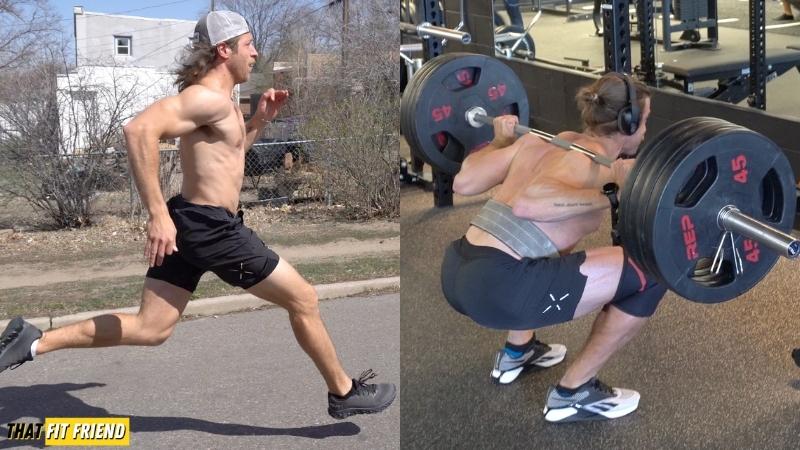
When it comes to lifting, I review the following:
- Stability Assessment: At what weight does the shoe’s stability start to drop off and when does the midsole compress?
- Lifting Contexts: What types of lifting settings does the shoe best with: free weights, machines, bodyweight, etc.)?
Once I’ve identified these thresholds, I dive into the shoe’s construction to better understand the materials used in the model. This can then suggest the shoe’s durability and value, which can relate to the two threshold categories above.
What I Wear for Treadmill Runs | On Cloud X 4
The On Cloud X 4 is my top “hybrid” training shoe for anyone who plans to use their model frequently for treadmill running. I often describe this shoe as being a good pick for the lifter and athlete who likes to tack on a few pre and post-workout miles when at the gym.
Performance Thresholds I’ve Tested Them for
- Mileage Comfort Threshold: 0-5 miles
- I like these for workouts with short intervals programmed or slow warm-ups and cool-downs
- I also find their most comfortable distance is between 1-3 miles
- Lifting Stability Threshold: <365 lbs
- I’ve deadlifted up to 365 lbs with this shoe and they were so-so. I’d say stay 335 lbs and under to avoid a ton of compression.
- My heaviest squat in these was 185 lbs. They’ve done an okay job for lighter strength sessions.
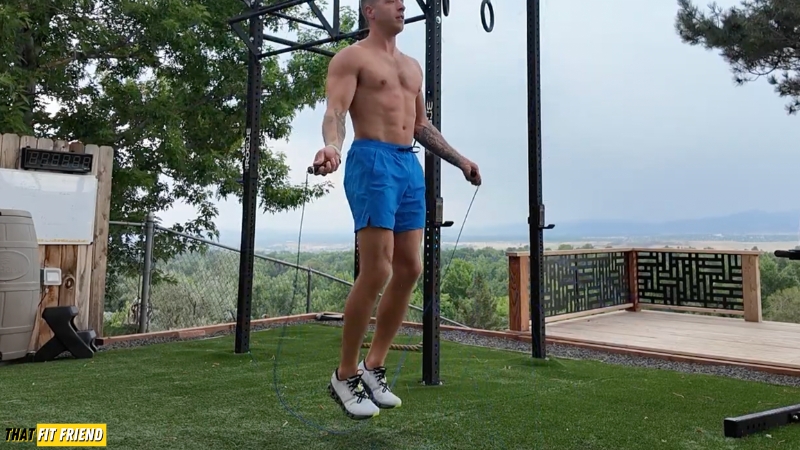

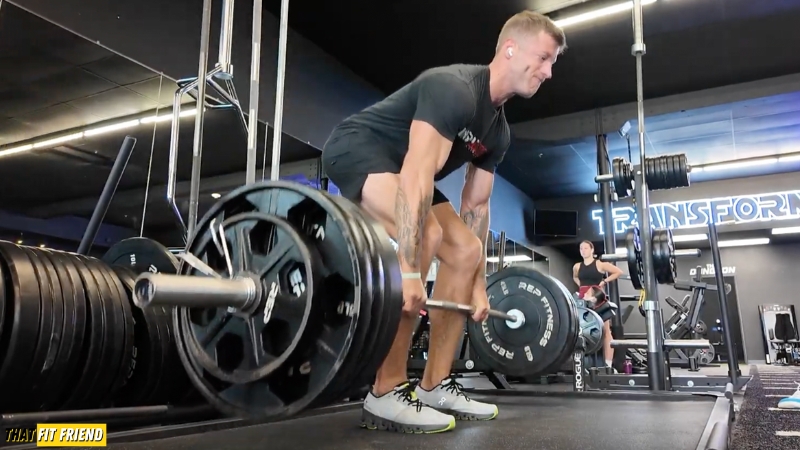
Sizing and Fit Suggestions
- Removable Insole: Yes
- Narrow (<D width) Foot Sizing: True to Size, wider fit
- Medium (D width) Foot Sizing: True to size
- Wide (E+ width) Foot Sizing: True to size. 3E+ feet, pass on these.
- Arch Thoughts: Moderate arch support
For More Context
- For More Info: Read My Review
- Runner-Up PUMA PWR Nitro Squared: Read My Review
Why I Like Them
For running contexts, I like the CloudTec midsole and how it provides a pretty comfortable ride, especially for short (<3 miles) and mid-range runs (3-5 miles). I also like this model’s upper for running due to its lightweight and breathable nature.
When lifting, the On Cloud X 4’s stability is okay, and it will work for loads up to 335 lbs, I’ve found. Once you pass this threshold, you’ll start to notice a little midsole compression due to the CloudTec lacking a more stable construction.
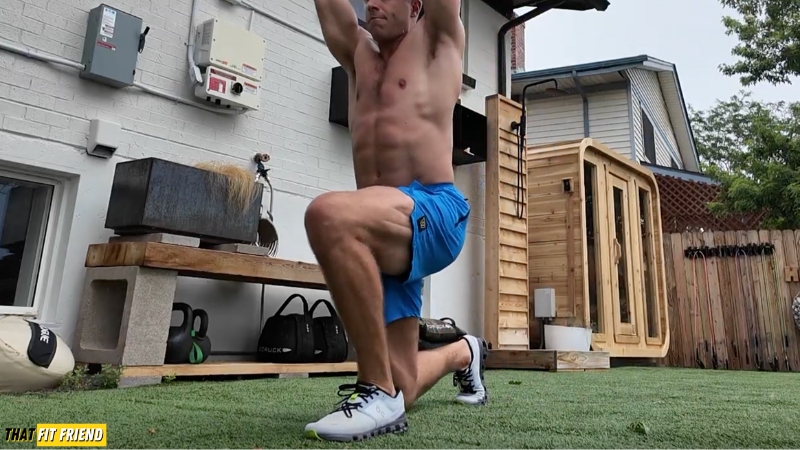
If you plan to primarily do HIIT workouts, classes, and light lifting with a fairly regular bias towards treadmill running, then I think the On Cloud X is a good shoe to look into.
Keep in mind, that two performance areas where the On Cloud X 4 falls short are maximal lifting and lateral explosive movements — which is consistent with prior models. I haven’t loved this shoe for these contexts due to its midsole compressing on me and lacking support.
For Workout Classes With Running | Adidas Rapidmove ADV 2
Don’t sleep on the Rapidmove ADV 2. This model has been exceptional for workouts where I’m blending cross-training, light lifting, and short interval runs. The Lightstrike foam midsole in this model provides a springy fit and feel when training, especially doing short runs.
Performance Thresholds I’ve Tested Them for
- Mileage Comfort Threshold: 0-5 miles
- I like these for HIIT and class workouts with short intervals programmed or casual warm-ups and cool-downs
- I also find their most comfortable distance is between 1-3 miles
- Lifting Stability Threshold: <225 lbs
- I’ve deadlifted up to 225 lbs and I wouldn’t push it much past this weight.
- My heaviest squat in these was 185 lbs. These will lack stability for heavier squats due to their higher stack height and toe spring.
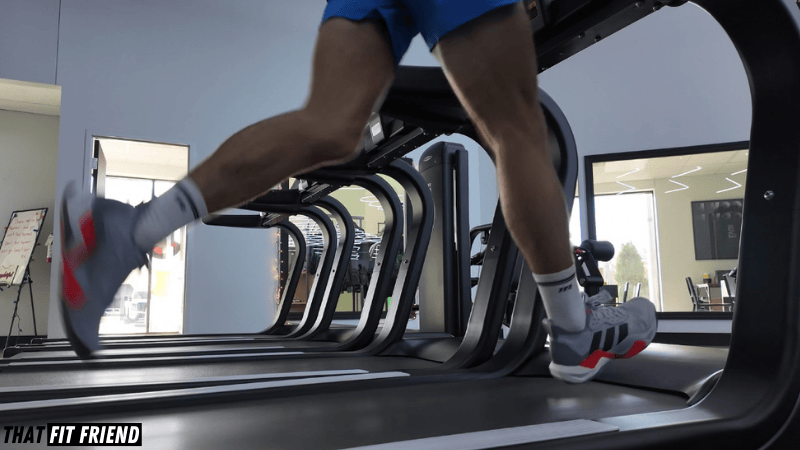
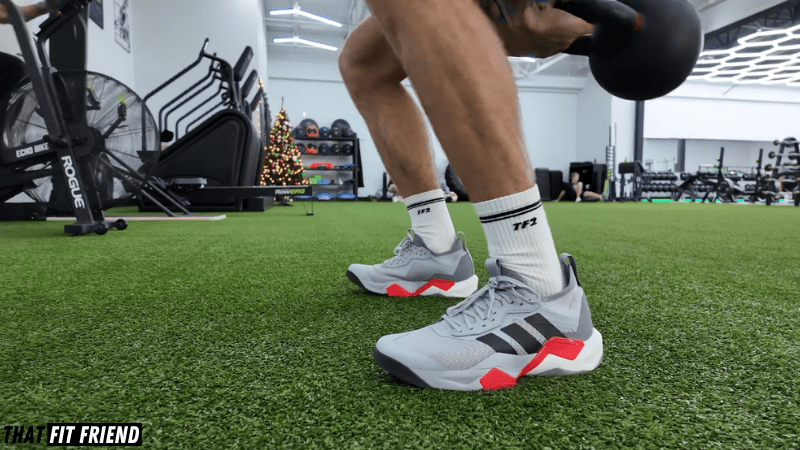
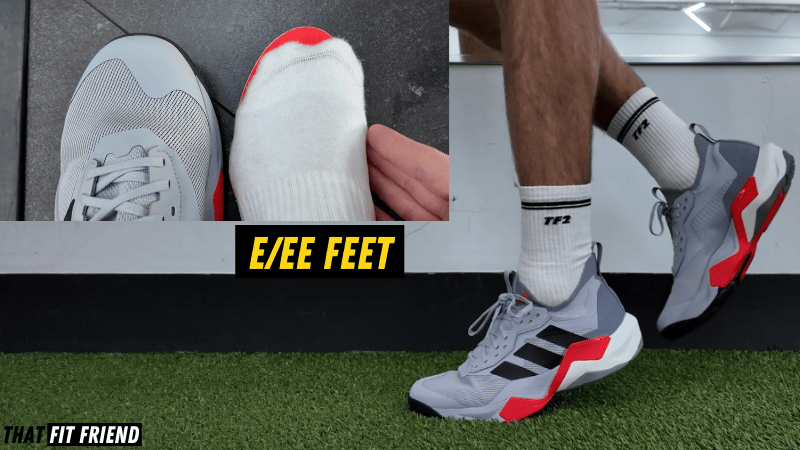
Sizing and Fit Suggestions
- Removable Insole: Yes
- Narrow (<D width) Foot Sizing: True to Size, wider fit
- Medium (D width) Foot Sizing: True to size
- Wide (E+ width) Foot Sizing: True to size. 3E+ feet, pass on these.
- Arch Thoughts: Moderate arch support
For More Context
- For More Info: Read My Review
- Runner-Up Nike Free Metcon 6: Read My Review
Why I Like Them
The Rapidmove ADV 2 has been a sneaky strong performing shoe for class-style workouts where I’m blending a lot of HIIT and short runs. The Lightstrike foam midsole feels lively and for things like box jumps, jump rope, and multi-directional movements.
I’ve even had members in the That Fit Friend community say they’ve used these for their HYROX style workouts and classes and have really enjoyed them. When I asked why, they credit the midsole and the Continental rubber outsole for providing good grip on different surfaces.
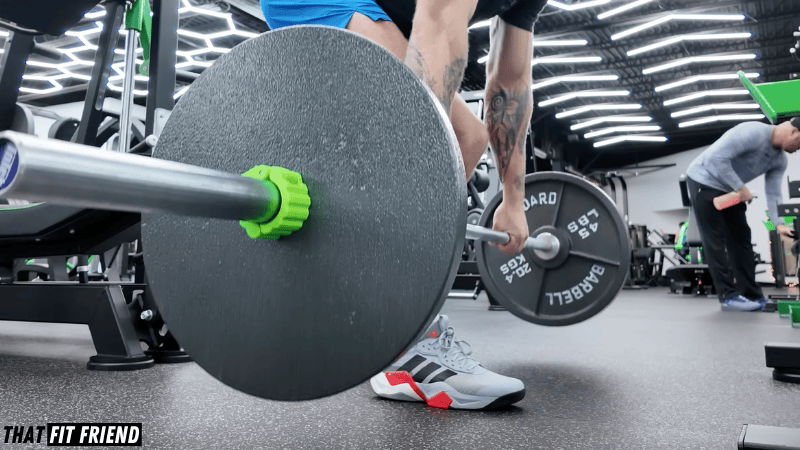
The Torsion system through the midfoot is also a nice touch of contributing a little more midfoot stability during single-leg movements. I think this was a good move from Adidas since this model’s stack height sits a little higher.
My only real knock on this model is that you can’t push them crazy heavy with strength movements. If you’re after a shoe that can hold its own for classes AND that you can lift in, then I’d suggest checking out the Inov8 models featured here or the Nike Air Zoom TR 1/Free Metcon 6.
When I’m Moving FAST and Sprinting | Inov-8 F-Lite
The Inov8 F-Lite has been a great shoe for my “athletic-style” workouts where I’m sprinting and doing short interval runs. This model is built for CrossFit, so it has the durability to withstand these types of workouts as well.
Performance Thresholds I’ve Tested Them for
- Mileage Comfort Threshold: 3 miles
- I like these for workouts with short intervals programmed
- I also find their most comfortable distance is between 0-3 miles
- Lifting Stability Threshold: <485 lbs
- I’ve deadlifted up to 485 lbs with this shoe without too many stability issues.
- My heaviest squat in these was 315 lbs. The POWERFLOW MAX midsole did a good job with this weight.
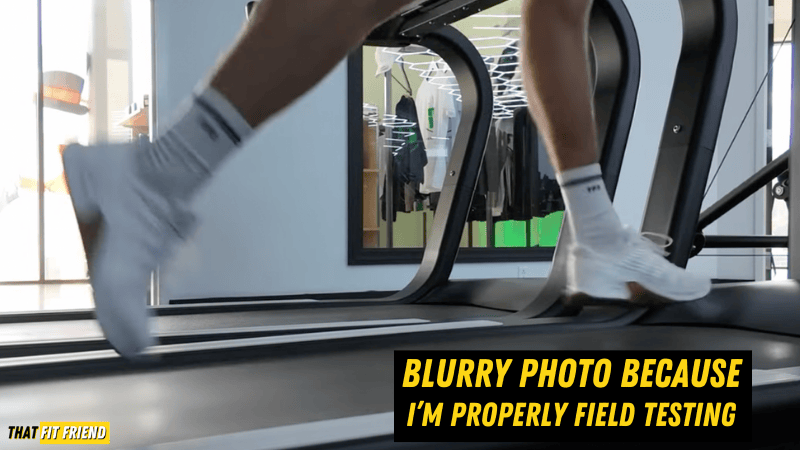
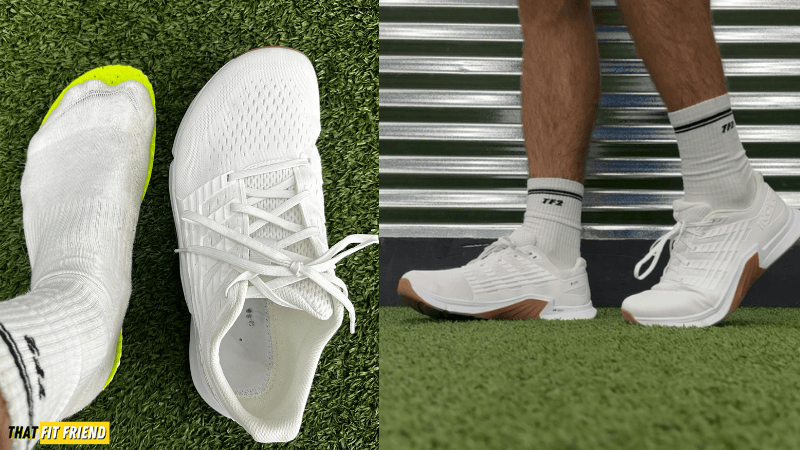
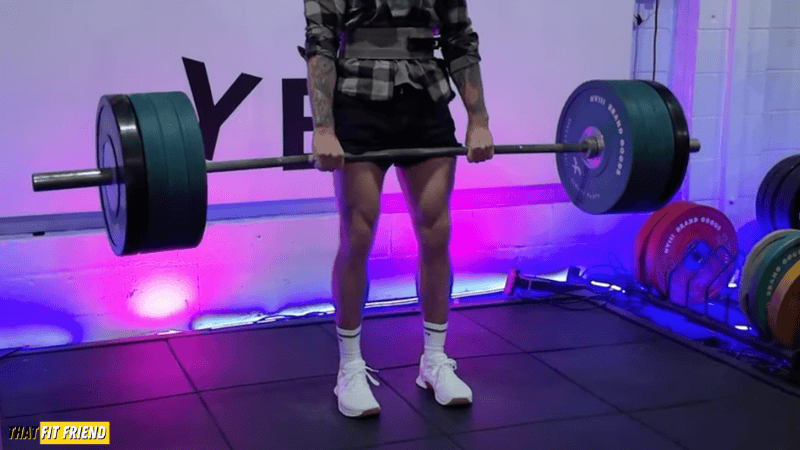
Sizing and Fit Suggestions
- Removable Insole: Yes
- Narrow (<D width) Foot Sizing: True to Size, wider fit
- Medium (D width) Foot Sizing: Go up a half-size
- Wide (E+ width) Foot Sizing: Go up a half-size, 3E+, go up a full size
- Arch Thoughts: Light arch support
For More Context
- For More Info: Read My Review
- Runner-Up Nike Air Zoom TR 1: Read My Review
Why I Like Them
The F-Lite is a dark-horse type of training shoe that can do pretty much everything. This shoe made this list for sprints specifically because it’s responsive, has good upper security, and the sole is highly flexible, so they don’t feel clunky when trying to sprint and move fast.
The POWERFLOW MAX midsole feels good for workouts where you’re getting heavy, then doing short interval runs. This is why I also like my F-Lite for CrossFit WODs where we’re running a bit.
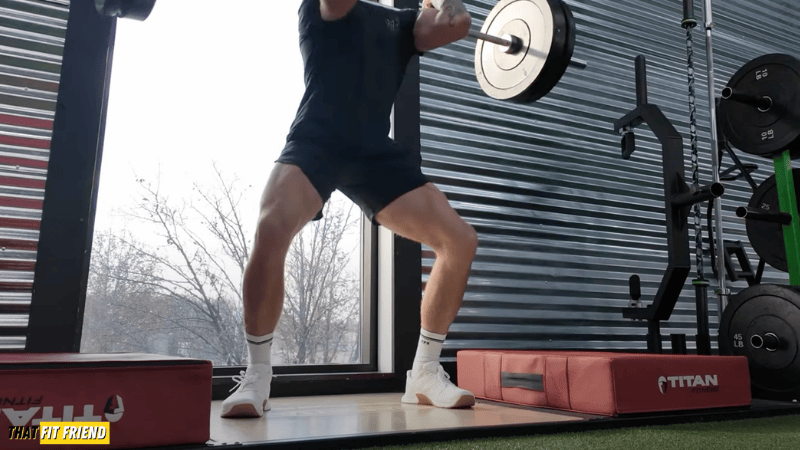
For running and sprinting, the midfoot MET-Cradle does a good job of locking the feet down. You shouldn’t experience security or spillover issues in this model whatsoever, and you can do cleans and snatches in them if you routinely program power exercises with your sprint sessions.
The wider forefoot is also a perk for sprinting purposes when you want maximal ground contact during acceleration phases. I like how the grippy outsole also gives you a bunch of bite when training on different surfaces so you shouldn’t stress slipping if you plan to sprint in these.
When I Want More Toe Wiggle Room | Altra Solstice XT 3
The Altra Solstice XT 3 is my favorite training shoe for wide feet and hybrid-style sessions. However, I’ve been heavily rotating in this category between this shoe and the F-Fly. I find this model to work best for those who want a hybrid training shoe for some casual treadmill running and lifting.
Performance Thresholds I’ve Tested Them for
- Mileage Comfort Threshold: 03/4 miles
- I like these for workouts with short intervals programmed
- I also find their most comfortable distance is between 0-3ish miles
- Lifting Stability Threshold: <455 lbs
- I’ve deadlifted up to 455 lbs with this shoe without stability issues.
- My heaviest squat in these was 315 lbs. They’ve done a pretty good job at this weight with its wider platform.
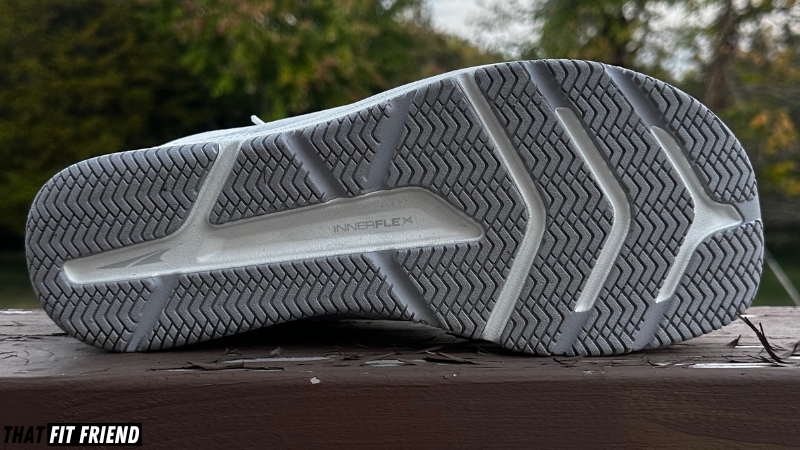
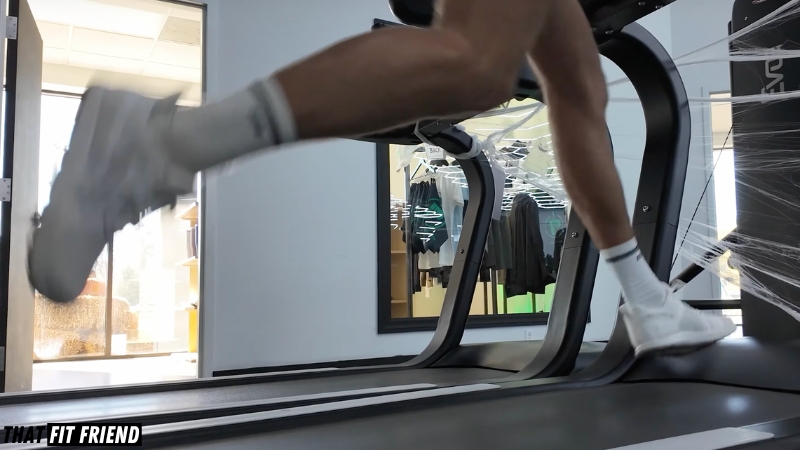
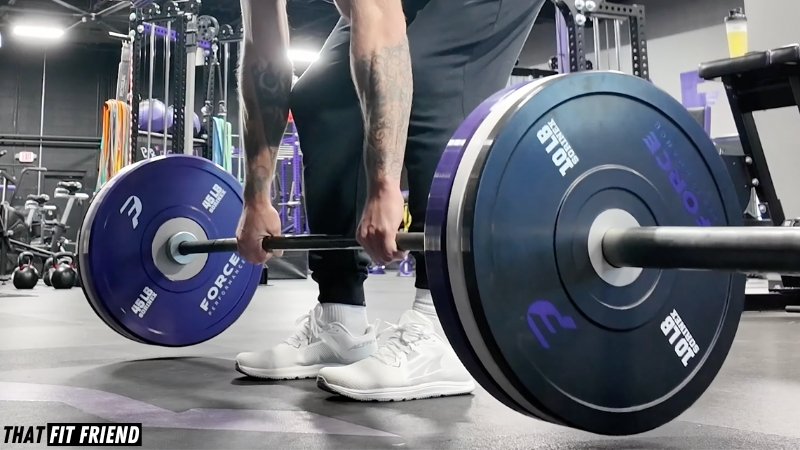
Sizing and Fit Suggestions
- Removable Insole: Yes
- Narrow (<D width) Foot Sizing: True to Size, wider fit
- Medium (D width) Foot Sizing: True to size
- Wide (E+ width) Foot Sizing: True to size
- Arch Thoughts: No to light arch support
Fore More Context
- For More Info: Read My Review
- Runner-Up Wide Feet Option Inov8 F-fly: Read My Review
Why I Like Them
I like the wider toe box in this shoe, and if you’re a fan of having room for toe splay, then you’ll appreciate it. I have an E-width foot and have PLENTY of room in this model to let my feet move and do their thing while running and lifting.
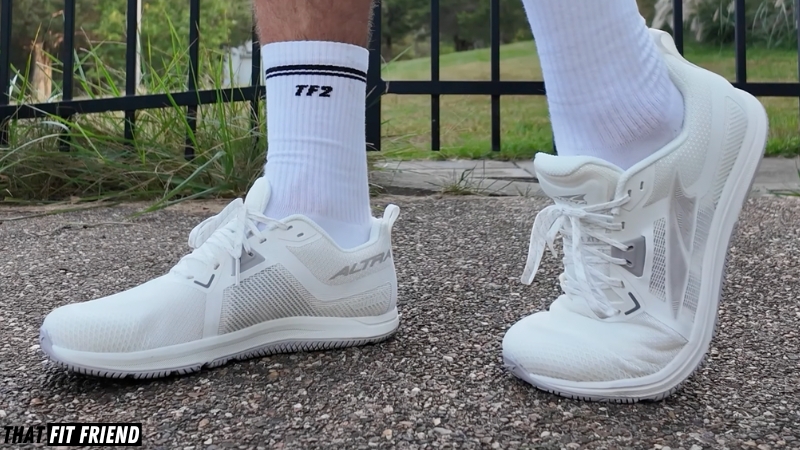
In this model, I’ve squatted up to 315 lbs and have deadlifted 455 lbs, and they’ve been “okay” for those asks. They’re not going to be the densest and most stable shoes in the gym, but they should hold their own for most lifters and strength asks.
The zero-drop of this shoe is also nice for giving this model a more minimalist feel. I like to rotate between barefoot shoes and training shoes so having zero-drop options with a bit more cushion is always nice for workouts or contexts where I want more comfort.
While I’ve liked the Solstice XT 3 for running and lifting, they’re not perfect. My two drawbacks to this model are the outsole’s durability that has remained unchanged from the XT 2 and that the tongue lacks a gusset, which can result in tongue security issues at times.
When I’m Also Lifting Heavy | Reebok Nano X5
The Reebok Nano X5 has been heavily improved from its predecessor, especially in the lens of being a viable “hybrid” training shoe option. In this list, this model will be the least runnable but the best for heavier strength work if you want to blend the two.
Performance Thresholds I’ve Tested Them for
- Mileage Comfort Threshold: 0-1.5 miles
- I like these for workouts with short intervals programmed
- I also find their most comfortable distance is between 0-1.5 miles
- Lifting Stability Threshold: <505 lbs
- I’ve deadlifted up to 505 lbs with this shoe without stability issues.
- My heaviest squat in these was 335 lbs. They’ve done a great for strength and hypertrophy workouts.
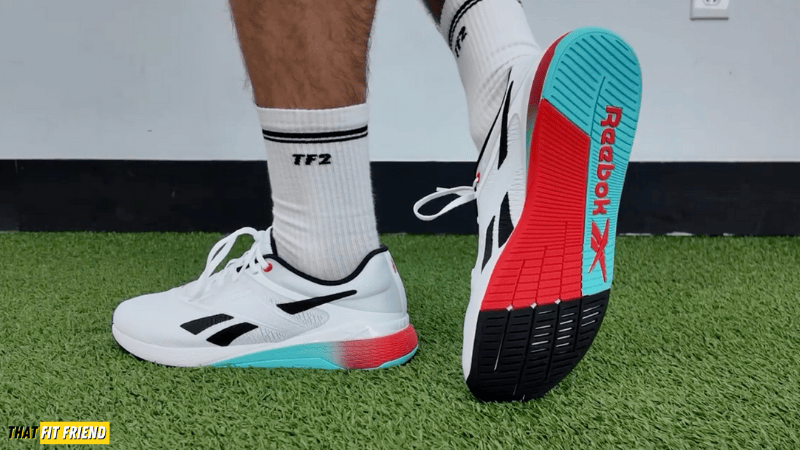
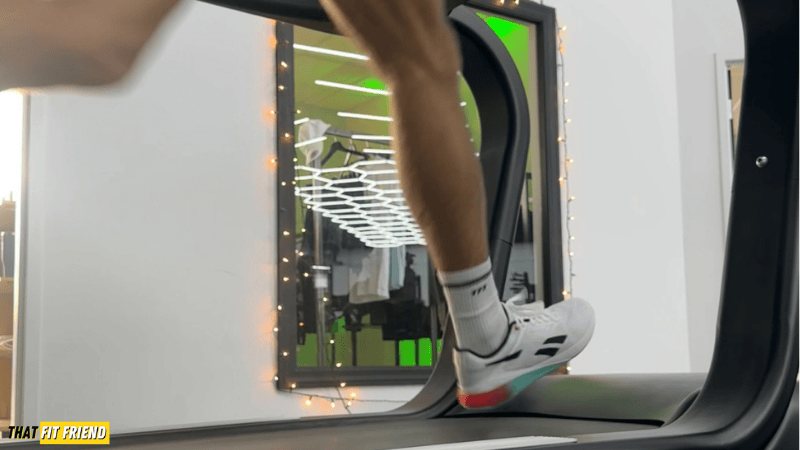
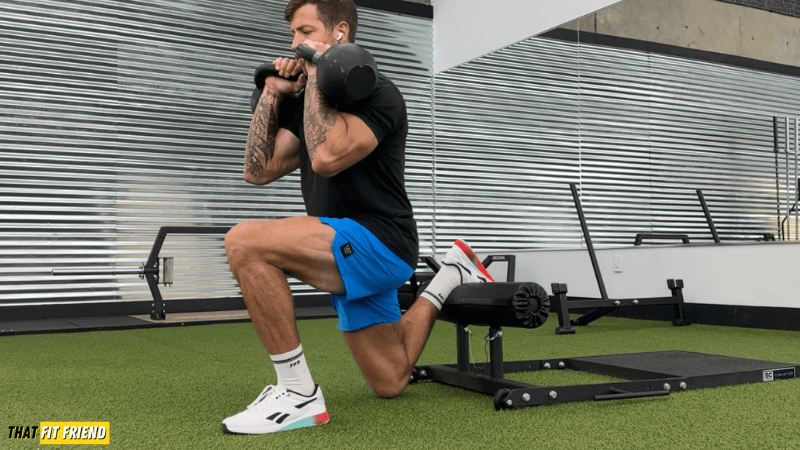
Sizing and Fit Suggestions
- Removable Insole: Yes
- Narrow (<D width) Foot Sizing: True to Size, wider fit
- Medium (D width) Foot Sizing: True to size
- Wide (E+ width) Foot Sizing: True to size. 3E+ widths may find them limiting
- Arch Thoughts: Moderate arch support
For More Context
- For More Info: Read My Review
- Runner-Up Adidas Rapidmove ADV 2: Read My Review
Why I Like Them
The Reebok Nano X5 can hold its own for heavy-strength work and short runs, and lot better than the X4 did. I use this model for pretty much every type of workout and that’s due to its versatile construction — I call them a “best-of-all-worlds” type of trainer.
In the context of lifting, I’ve deadlifted up to 505 lbs in this shoe and have used it for 335 lb squats and haven’t found any issues with the midsole compressing. I’ve also liked their performance for heavy machine lower-body exercises like leg presses and hack squats.
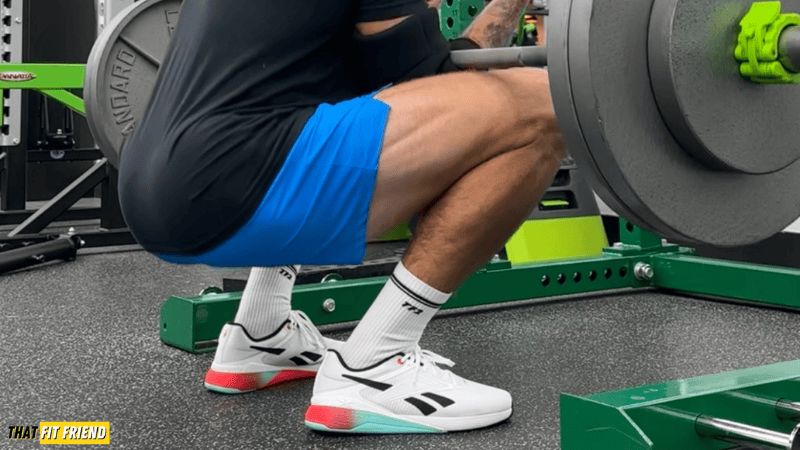
When it comes to running, the Nano X5 will be best served for intervals from 400 meters to about 1.5 miles, and they can work “okay” for running under 3 miles, in my opinion. For these running asks, this shoe feels responsive enough and isn’t so dense that they beat you up despite having a stabler feeling midsole.
I also appreciate that the Nano X5 works for my athletic and CrossFit-focused sessions. This model’s durability works well in these training verticals, and the Flexweave upper has done a good job with overall abrasion resistance.
When I’m Training Like a HYROX Athlete | Inov-8 F-Fly
The Inov-8 F-Fly is an amazing shoe that I’ve quickly fallen in love with for my hybrid workouts. To be fair, this is one of the first shoes in a minute that has instantly clicked for me when it comes to seamlessly blending running and lifting in one workout.
Performance Thresholds I’ve Tested Them for
- Mileage Comfort Threshold: 0-5 miles
- I like these for CrossFit WODs with running programmed
- I also find their most comfortable distance is between 1-3 miles
- Lifting Stability Threshold: <425 lbs
- I’ve deadlifted up to 455 lbs with this shoe without too many issues; I wouldn’t go much heavier than that deadlifting in them
- For squats, the heaviest I’ve went is 325 lbs and I’ve had other community members hit similar numbers with no issues



Sizing and Fit Suggestions
- Removable Insole: Yes
- Narrow (<D width) Foot Sizing: True to Size, wider fit
- Medium (D width) Foot Sizing: Go up a half-size
- Wide (E+ width) Foot Sizing: Go up a half-size, 3E+, go up a full size
- Arch Thoughts: Light arch support
For More Context
- For More Info: Read My Review
- Runner-Up Adidas Rapidmove ADV 2: Read My Review
Why I Like Them
I like the POWERFLORW Pro midsole used in this shoe and how responsive it felt for my interval runs and aggressive 5ks. I was shocked at how comfortable this model felt out of the box and that it didn’t beat me up with its “lower” stack height (compared to normal running shoes).
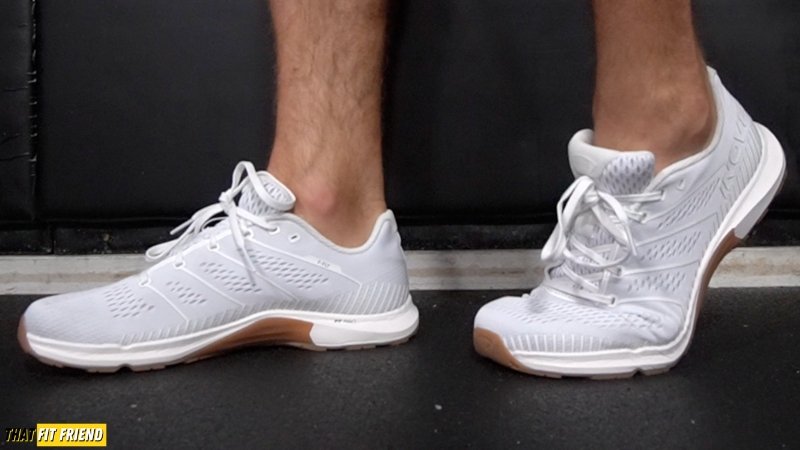
I’ve also come to appreciate the 2.5mm lugs on this shoe. On turf, they’ve given me an awesome bite for explosive front-to-back exercises like broad jumps, and I haven’t experienced any slip issues with this model when doing sled pushes and drags.
The lightweight mesh upper has helped with the breathability of this shoe and I’ve also found myself gravitating towards them for daily wear use. For example, if I’m walking Maui [my dog] 2-4 miles, I’ll rock these because they’re comfy, keep my feet cool, and look good.
My only performance-related drawback with the F-Fly so far is that they can lack rigidity for lateral explosive work. There’s no internal toe counter in this shoe, so you can spill over the midsole a little at times in this context. It’s not the biggest deal, but it’s something to consider depending on how you train.
My Opinion: What Makes a Good Hybrid Training Shoe?
Every good hybrid training shoe has one thing in common. This commonality is that they can perform well in a range of lifting and running settings serving as a true hybrid training shoe.
The way I like to conceptualize training shoes, running shoes, and hybrid training shoes is by placing them on a performance spectrum. On one end, we have training shoes that excel for heavy and more serious lifting.

Then, on the other end, we have models that are designed for running and excelling at different mileages. Once I’ve identified where the shoe falls on the performance spectrum, I then start to assess the shoe’s construction and how that correlates to versatility, stability, and comfort.
More specifically, I’m considering three major construction aspects. First, the midsole of the shoe and the materials used in it. A shoe’s midsole will relate to its responsiveness when running and its stability when training heavily.
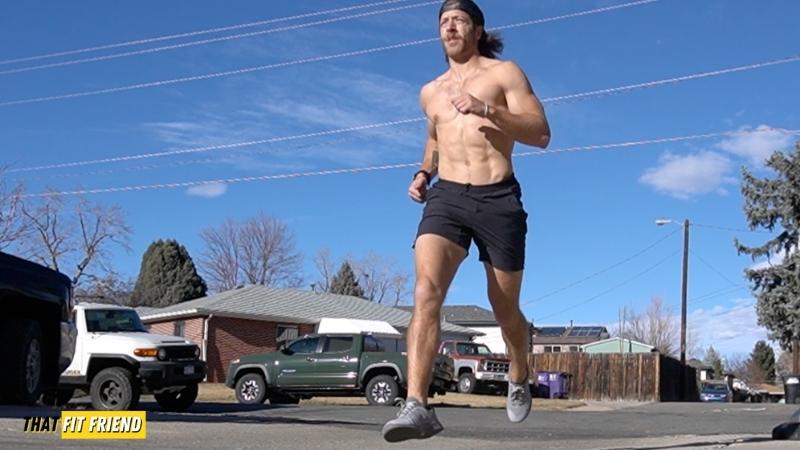
Second, I’m considering how the hybrid training shoe’s midsole influences comfort. Factors that can influence comfort and feed into this include a shoe’s stack height, heel-to-toe drop, and the compression you experience when training and running with the materials used.
Third and lastly, I’m assessing a shoe’s durability and what settings this durability will feed into best. For example, if you’re primarily tackling outdoor workouts, then you’ll want a shoe with an outsole and upper that can withstand the demands of outdoor training.
Basically, I like to consider the three main construction buckets below when considering factors that can influence how well a hybrid training shoe performs.
- Midsole Materials and Construction
- Stack Height, Heel-to-Toe Drop, Comfort
- Durability of the Outsole and Upper
These three construction buckets then help paint the picture as to the mileage and stability thresholds that hybrid shoes will be best for.
Why Hybrid Shoes Can Be Awesome
When it comes to training shoes that are good for lifting and running, there are two main benefits that can come along with them. These benefits can ebb and flow based on the shoe in question and your performance needs.
1. Best of All Worlds
The first benefit is that hybrid training shoes can give you a “best of all worlds” type of feel. This means that your shoes can do pretty well when lifting, tackling HIIT workouts, and even doing shorter runs.

This can be useful for the athlete and lifter who isn’t hyper-specific in any one training category. As you get more niche with your training, you’ll want something more specific, but if you’re not specific with your goals, then a hybrid shoe can be a really good fit.
For niche examples, cross-training shoes that are super stable in nature will lack comfort when running and can leave your feet feeling fatigued. Conversely, running shoes can lack stability when training heavily and compromise performance.
2. Only Need One Pair of Shoes
Another benefit to hybrid training shoes is that you only need to bring one pair of shoes to most of your training sessions. This is great for contexts where you don’t want to bring more than one pair of shoes with you to train or when you don’t want to switch your shoes mid-workout.
This can be great for anyone who’s commuting with limited space in their bag or someone who wants to limit their overall spending by investing in one pair of shoes versus specific shoes for every type of training.
Remember, Hybrid Shoes Can’t Do It All
As you become more serious and specific about your training, a hybrid training shoe’s benefits will start to diminish. I like to use my coaching background to discuss and conceptualize the drawbacks of hybrid training shoes.
A good example here would be someone who primarily does CrossFit workouts and works to get better at the sport. These athletes will want a quality pair of CrossFit shoes to help them achieve their goals.
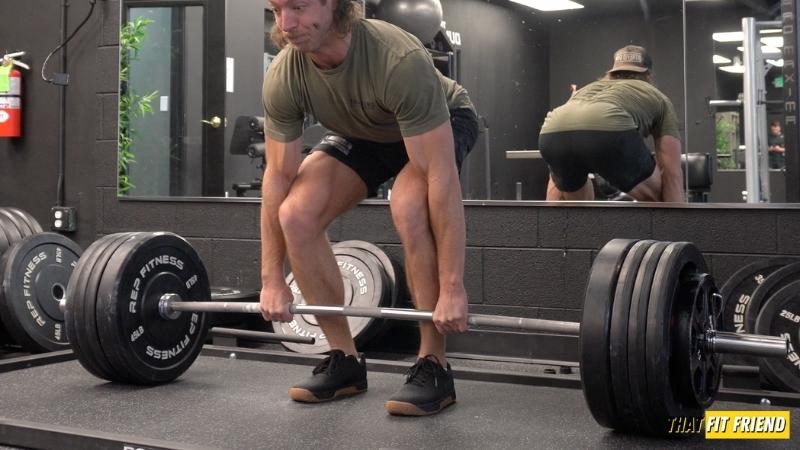
A good pair of CrossFit shoes will deliver construction features that specifically feed into this style of training, whereas hybrid training shoes will be more general in their construction.
That being said, the main drawback to hybrid training shoes is that there will always be a threshold where their performance drops off and this could come in the form of running or lifting-focused goals.
At the End of the Day…
Certain training shoes on the market are purposely designed for running and lifting. If you train like a hybrid athlete, then these models can be worth exploring especially if you’re only wanting one shoe for your workouts.
As you get more specific with your training, you’ll want to look into more specific training shoes. Hybrid training shoes can be great for those looking to spend less and bring fewer shoes with them to the gym.
If you have any questions about the hybrid training shoes featured in this article, drop a comment below or reach out to me personally via Instagram (@jake_boly or @that_fit_friend).

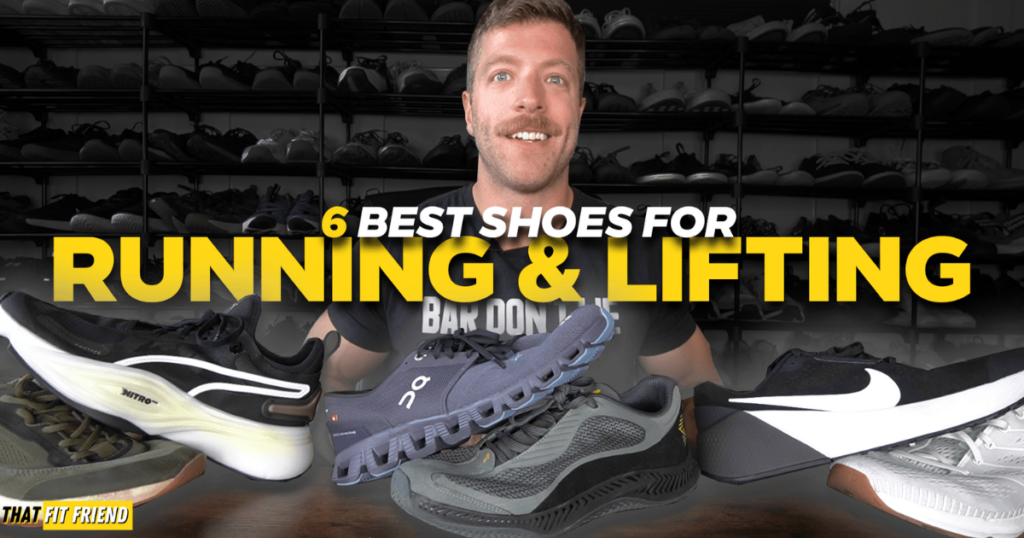
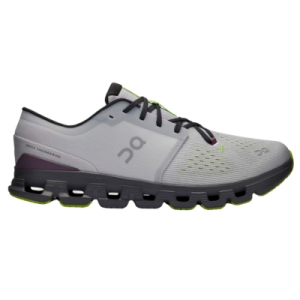

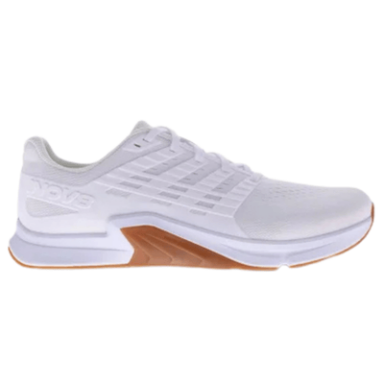
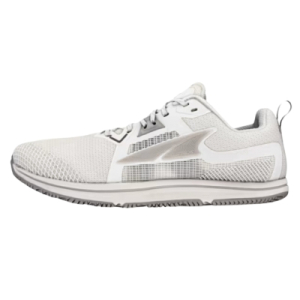
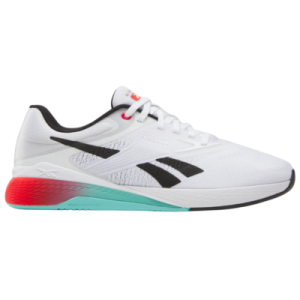
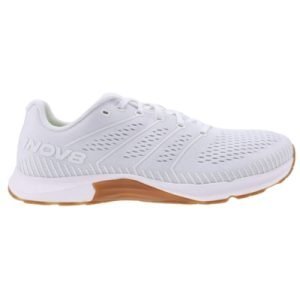



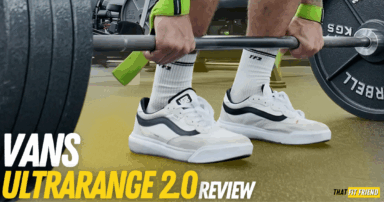

Louis
I’m curious about the f-fly by inov8. I normally wear brooks. I’m starting to think it’s too much cushion when I do weights. I do Orange Theory. Kind of like cross fit. There is rowing, tredmill, and weight floor. Weight floor is all free weights and some cardio. No worries about loading too much there. My worry is with running. I’m a front runner. I never strike with my heel. Will this be a good shoe?
Hey Louis! I think it would be solid for that ask. I’ve really enjoyed them for sprints and interval runs where I’m more forefoot dominant! I have more reviews on this shoe on the site and YouTube channel, too.
Thank you for checking out my content, btw!
James Baker
What a great content! Useful and comprehensive guide! Do you have a guide about choosing the right running shoes aswell?
Thank you, James! I have one in the works, but running isn’t my main training vertical/focus so I’m slower on creating content with running shoes as I’m not putting as much volume in on a weekly basis as your pure running-focused individuals and I want to make sure I properly test models before posting about them. Should have something in the next two months, though 🙂
Shannon
Honestly – such a great article. Provided the in-depth analysis I was looking for and appreciate the recommendations with images. Thanks for insight
Thank you so much! Always feel free to reach out if you need more context/depth on any shoe!
Jan Patrick
Hello. I work with kids at school. I love being active. But I think I’ve always been using wrong shoes, now I got a litttle bad feet and knees..
I really need an outdoor shoe for asphalt, for a big variety of activites. Lots of quick movement. Like tennis, basketball, , football, running.. But there is also some standing still on asphalt that may hurt..
Also we have artific grass (soccer field), so I need some stability for that aswell..
Think I overpronate s little too..
I’d explore the Reebok Nano X1/X2 Adventure. Those shoes should deliver the versatility you want and work outdoors!